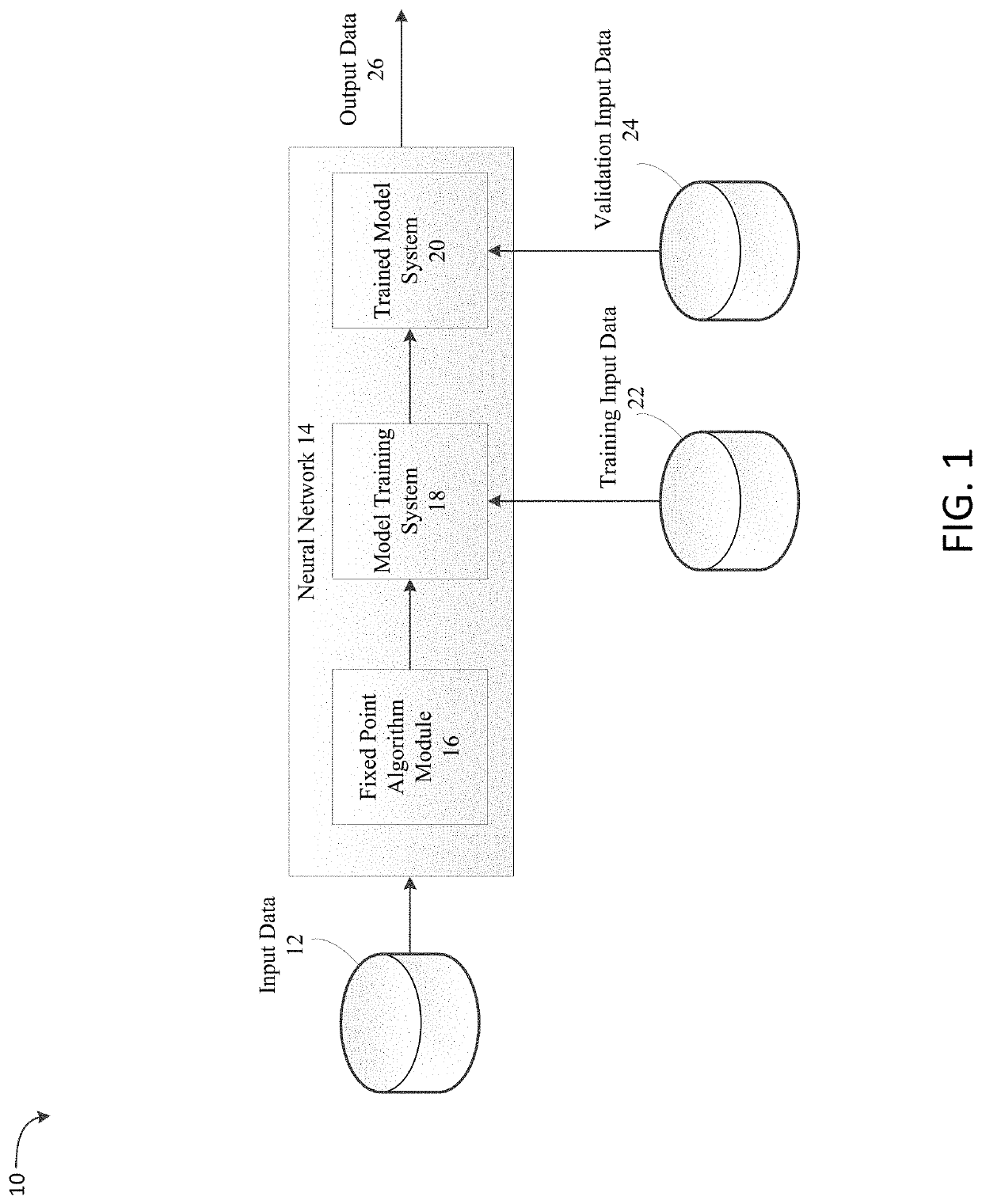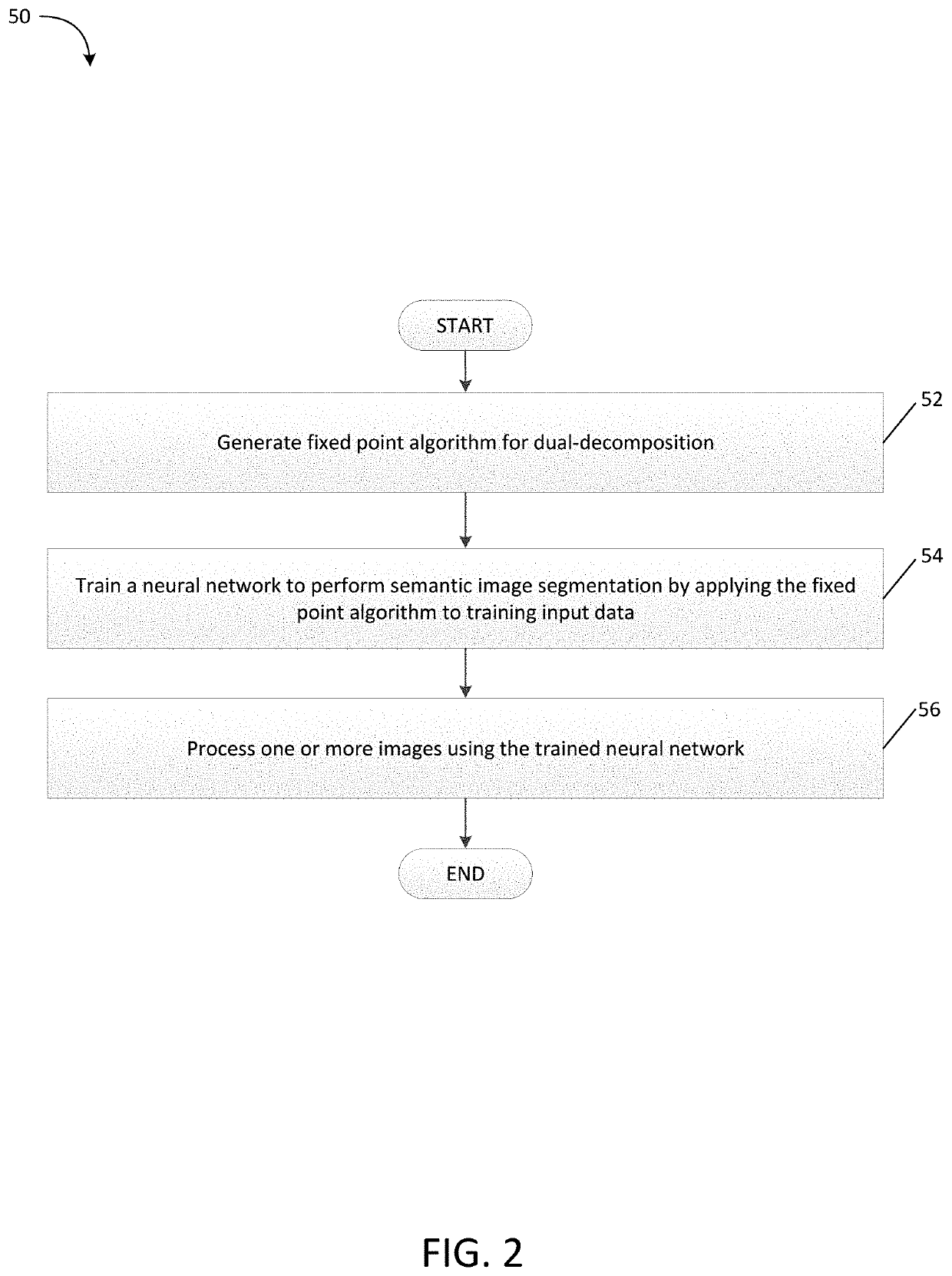Computer Vision Systems and Methods for End-to-End Training of Convolutional Neural Networks Using Differentiable Dual-Decomposition Techniques
a computer vision and neural network technology, applied in the field of computer vision, can solve problems such as not directly optimizing a real problem
- Summary
- Abstract
- Description
- Claims
- Application Information
AI Technical Summary
Benefits of technology
Problems solved by technology
Method used
Image
Examples
Embodiment Construction
[0021]The present disclosure relates to computer vision systems and methods for end-to-end training of convolutional neural networks using differentiable dual-decomposition, as discussed in detail below in connection with FIGS. 1-14.
[0022]End-to-end training of combined convolutional neural networks (CNNs) and conditional random fields (CRFs) generally improves quality in pixel labeling tasks in comparison with decoupled training. Conventional end-to-end trainable systems are generally based on a mean-field (MF) approximation to the CRF. The MF approximation approximates a posterior distribution of a CRF via a set of variational distributions, which are of simple forms and amendable to an analytical solution. This approximation is utilized in end-to-end trainable frameworks where the CRF is combined with a CNN because MF iterations can be unrolled as a set of recurrent convolutional and arithmetic layers and thus is fully differentiable.
[0023]However, despite computational efficienc...
PUM
 Login to View More
Login to View More Abstract
Description
Claims
Application Information
 Login to View More
Login to View More - R&D
- Intellectual Property
- Life Sciences
- Materials
- Tech Scout
- Unparalleled Data Quality
- Higher Quality Content
- 60% Fewer Hallucinations
Browse by: Latest US Patents, China's latest patents, Technical Efficacy Thesaurus, Application Domain, Technology Topic, Popular Technical Reports.
© 2025 PatSnap. All rights reserved.Legal|Privacy policy|Modern Slavery Act Transparency Statement|Sitemap|About US| Contact US: help@patsnap.com



